The United States
1. Let’s start the week with the US where the Q3 GDP growth beat consensus.
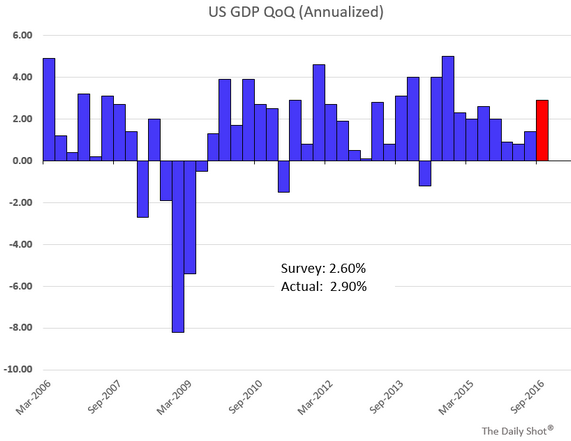
The surprise came from exports, which represented an unusually high proportion of the quarterly economic expansion.
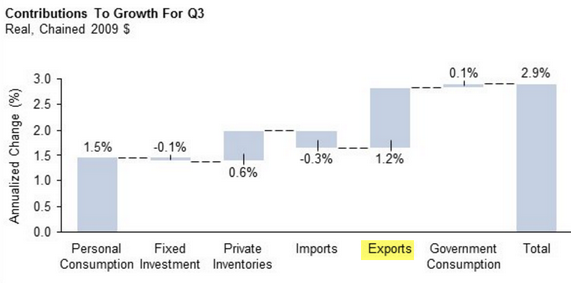
Source: @carlquintanilla, @HPSInsight, @MattMcDHPS
Moreover, a big portion of US exports growth came from soybeans sales to China – an event that is unlikely to be repeated going forward. The chart below shows the spike in US soy exports.
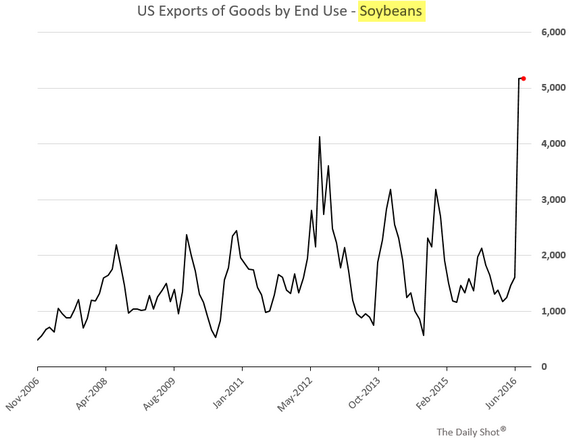

Source: CNBC; Read full article
2. Another strong contributor to the Q3 GDP growth was private inventory build. This component is also unlikely to be repeated because inventory levels are already elevated.

Source: Goldman Sachs, @joshdigga
The GDP report therefore does not seem to indicate that US growth is accelerating.
3. Bank credit expansion has been brisk over the past few years, resulting in US broad money supply growing significantly faster than the nominal GDP. Therefore, the nation’s velocity of money continues to hit new lows.

4. US consumer sentiment has softened more than expected, probably as a result of the presidential elections (See story).

5. Speaking of US presidential elections, Hillary Clinton’s odds of victory in the betting markets dropped about 7% on the news of James Comey’s letter to Congress.
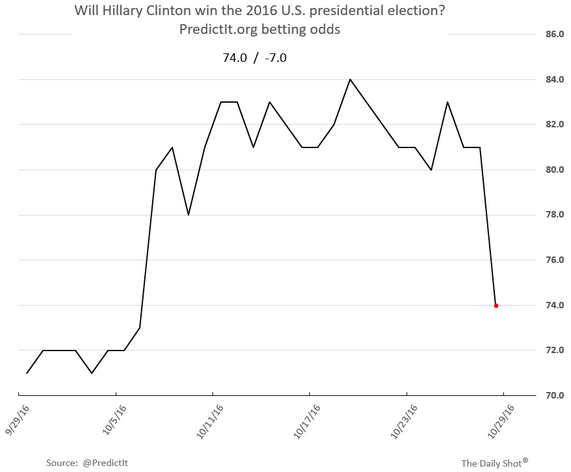
The resulting political uncertainty sent the dollar and US stock indices lower.

6. Separately, the term premium in the Treasury market, while remaining in negative territory, has been on the rise recently.

The Eurozone
Economic data from the euro area continues to suggest that the ECB is unlikely to introduce any material additional stimulus. As discussed before, the focus instead will be on the details of the QE taper.
1. While French inflation increases have stalled,

… German and Spanish CPI beat expectations.

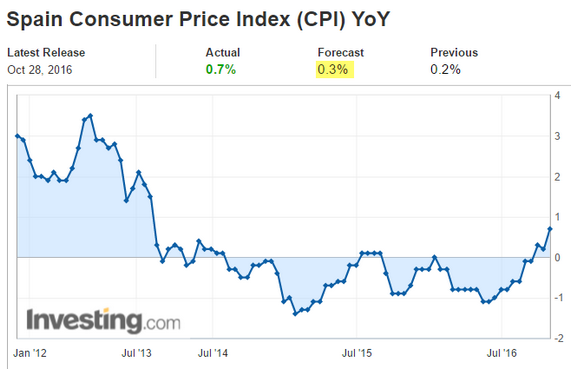
It’s also worth noting that the corporate “selling price expectations” index jumped to the highest level since 2012, suggesting firming wholesale prices.













Leave A Comment